Manufacture of traditional-style pickled food and grower of organic vegetables
The Story of Making PicklesAgriculture
Method of Production Without Preservatives, the Background, and Its Story
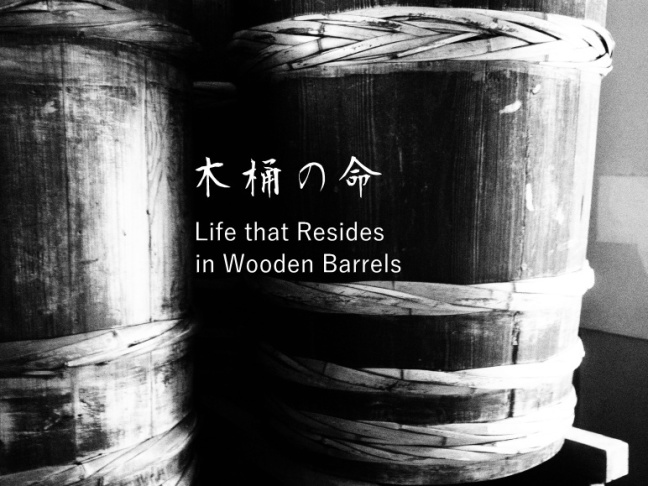
Written by Fukashi Setoyama“Within the World, Within the Food” (2013)
Introduction
Morning Markets’ O-Tsukemono (Pickled Vegetables)
In the cool mountain country lifestyle, pickled food making is an indispensable part of life. To taste the flavors of expertly fermented delicacies on a dinner table that is created in the distant kitchen, the creator must work hard at maintaining its quality.
Since the double arrival of a trend in low-sodium foods and global warming, preservatives have become used as a universal cure-all. I happened to visit a tsukemono-ya (pickled food shop) that was causing a stir to that trend at a morning market in Hida.
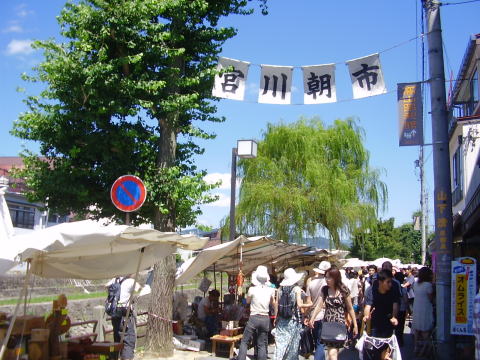
Have you ever heard of a tsukemono- steak? During the winter in Takayama City, Gifu Prefecture, which is close to 600 meters above sea level, the temperature dips below freezing point once the sun goes down. That is an ideal time for sake and a side dish, but there are no fresh vegetables in the fields deep in snow.
So how you get around it is, you dice old pickled vegetables and put it on top of a hot iron plate, drop an egg to mix it in to mellow out and bring a balanced acidity (to the dish). Once when you get accustomed to the out-of-this-world unique flavor, you will begin to pay respect to the depth of this mountainous country’s food culture. “In the old days, every house had a designated tsukemono-room facing north-east with no sunlight and there were usually about four barrels. One was for miso, two were for tsukemono, and another for home-made soy sauce. The tsukemono-culture was a resourceful way of compensating for the lack of fresh vegetables during the winter months.
However, within the last 20 years or so, the traditions of creating hand-made tsukemono,
that has been passed down for generations in each family has started to
deteriorate, and the barrels for tsukemono have become sources of firewood”, says
Yasunori Yoshima (born 1974), who is a local Hida-boy, and a father to
four children. He is a 5th generation farmer, who majored in rice farming
at the Kyushu Tokai University, but upon returning to Hida, he announced
that he would take on the family tradition despite oppositions from those
surrounding him saying “there is no future”. With that, he succeeded the
2.5-hectare land for farming, and tsukemono making know-hows that his grandmother
and mother had cultivated.
Here in this city, there are two morning farmers’ markets which have continued operation since the Edo Period. One of them is at the riverbank, in-between the bridges that connect the Miyagawa (Miya River) that runs South North, and every morning by 7 am, the area is filled with flowers, vegetables, and other brewed items. Etsuko-san (age 63) who is his mom, is by the store front for about hour and a half, constantly keeping a smile on her face and selling her tsukemono. After spending half of the day selling her items, she heads to the field in the afternoon to do some work and prepare for pickling. This morning market at Miyagawa is an important direct sales location for the local farmers. About 40 years ago when there were more than 150 vendors, Yoshima’s grandmother had sold tsukemono of red turnips and her other prided fresh vegetables on a bicycle-drawn cart. As the aging population increases, there are notably more empty spaces at the market, but there are still many farmers who vie to sell their flavorful tsukemono.
Morning Market Tossed About in the Trend of the World
From the old days, morning markets have always attracted professionals who would come to seek the best products before store hours, as well as locals who were looking for quality ingredients. The Yoshima Family’s tsukemono making started about 40 years ago, when Yoshima’s grandmother and mother started to participate in facilitating the morning market demands as a family business. “Even if we want to take home eggplants and daikon (white radish), it’s too heavy to carry home”, is what the customers used to say. To answer and respond to their customers’ comments, they thought of a way to sell their home made tsukemono at a direct sales vendor and challenged themselves to create seasonal tsukemono for each season.
Before long, (then) Japan National Railways’ marketing slogan “Discover Japan” came around and morning markets sprang into public attention becoming a tourist attraction. With a wave of people arriving, even a wildflower that was picked off a field would sell. Etsuko-san, who has 20 plus years of direct sales experience relays the story of the changing times.
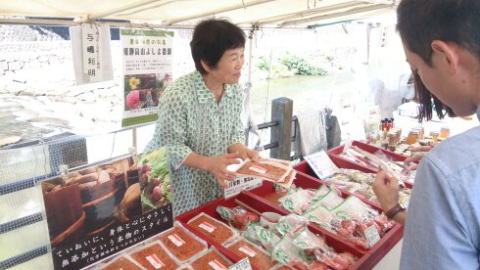
“If you are out there every day, you can tell by the way a customer reacts when he or she eats the samples. Of course, nowadays, there are no preservatives, but in the old days, unless preservatives were used, many people felt it was not enough or lacked flavor. If it were just for your family that would have been ignored, but because it was a traditional pickled red turnip with a unique flavor, it was not favorable enough to be accepted as a souvenir. So quite naturally, we added preservatives to be more acceptable.”
Travelling is where you create memories from your taste buds. Though his
grandmother had created vegetables without using artificial fertilizers
or pesticides, she could not fight against the unending waves of tourists
with taste buds that preferred the flavor from artificial preservatives.
As the fifth generation observed, “There were some vendors that couldn’t
catch up with manufacturing who would outsource f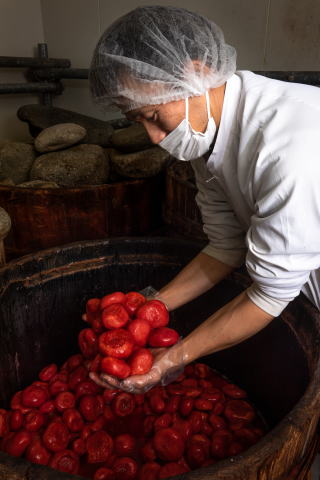 rom other brands and re-bag and sell as their own, and some who would add
flavor to the outsourced products and re-sell them. Even rakkyo (pickled
scallions), could not be sold that cheap unless they outsourced it from
some made-in-China products. None of us felt any resistance to that until
it became an obligation to list the country of origin for ingredients that
are used in all processed foods in 2004.” Just then, his parents’ home
became included as part of the planned land to be used for construction
of a highway, and their farm and home were both forced to switch to alternative
land, which allowed them a chance for a fresh start.
rom other brands and re-bag and sell as their own, and some who would add
flavor to the outsourced products and re-sell them. Even rakkyo (pickled
scallions), could not be sold that cheap unless they outsourced it from
some made-in-China products. None of us felt any resistance to that until
it became an obligation to list the country of origin for ingredients that
are used in all processed foods in 2004.” Just then, his parents’ home
became included as part of the planned land to be used for construction
of a highway, and their farm and home were both forced to switch to alternative
land, which allowed them a chance for a fresh start.
One day, the family held a meeting.
“There is a saying ‘Food improves people’. The least we could do is to
not create food that is bad for people. It does not have to sell, let us
make what brings satisfaction. Let us create and sell what is truly not
poisonous to the customers.”
Once they made up their minds, it was quick. They took out chemical seasonings,
switched their salt to naturally sun roasted salt, and let it prepare in
their plastic barrels. But once when they started selling this new batch,
there was a huge decrease in sales that dipped way more than they expected.
The tsukemono-like flavors were gone unbeknownst to them.
Life that Resides in Wooden Barrels
Even though everyone had grown up eating delicious tsukemono as children, the question remained as to why it had become impossible to re-create that flavor or taste. As the tsukemono-barrels became mostly plastic, the elderly neighbors also said the same thing. Even if the barrels are lighter and easier to work with, the flavors and tastes are different.
“When I think about it, when I used to eat them every day for breakfast, they were all pickeld in wooden barrels. Then I thought to myself, maybe the secret is in using the wooden barrels. But of course, to create enough (tsukemono) to sell, I had to gather as much wooden barrels as possible from all over the place.” This action attracted attention from the local newspaper, which published an article about it. The grandmas who had a special place in their hearts toward the wooden tsukemono barrels that they loved and used over the years, were moved by the newspaper article and volunteered to let-go and “hand-over” their items to be used by someone who would use it with care. Ultimately, it resulted in more than 50 wooden barrels being collected.
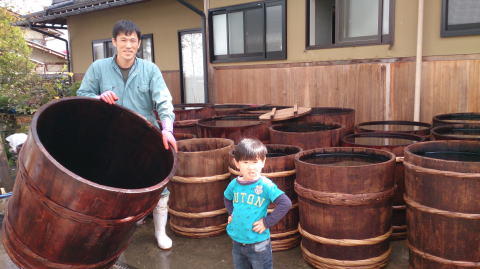
Sizes of these barrels varied small and large, from 100 liters to 300 liters, and some even dating back as far as the Tenpo Period (1830 ~ 1844), were collected. However, these barrels will start deterioating quickly if you do not use them. The once a year pickling extends the life of the barrels by preventing them from leaking. If it gets too dry, the barrel absorbs too much water and does not get the job done. If it is too loose, the bamboo hoop would have to get tightened. But the local barrel shopkeepers were all elderly, which meant it was difficult to get a new one at best, and to get some to be fixed proved even more difficult. Luckily, Yasunori’s younger brother was a carpenter specializing in traditional methods.
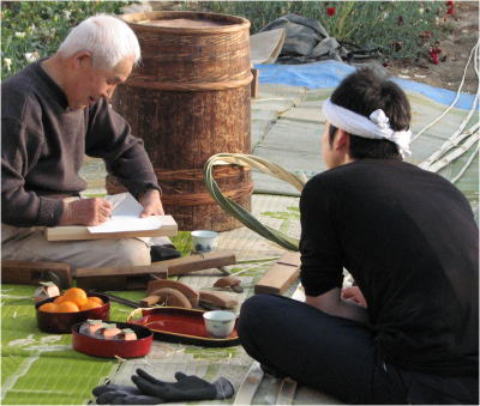
I told him that “I wanted to be able to handle and use the traditional tools”, and the younger brother agreed to fix them. For a tsukemono barrel, sawara
(a Japanese cypress) that is strong against water is suited as its material,
and for larger sized sake and miso barrels, sugi (a Japanese cedar) is
used. Compared to miso barrels that hold heavier content and are made to
be sturdier, the tsukemono barrels are rather delicate. Even the bamboo
material that is used as the hoop for the barrel is made from local plant
species such as the black bamboo or the purple bamboo, which is of better
quality than other invasive species as tortoise-shell bamboo.
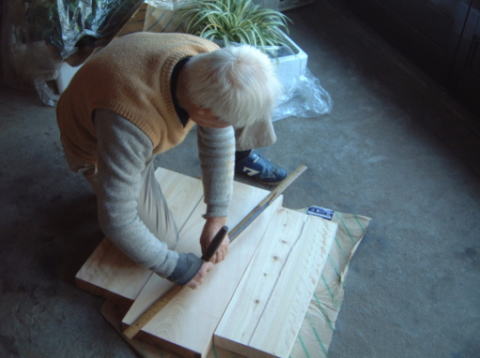
Yasunori has always enjoyed the process of fermentation somewhere in his heart. The daikon which is grown on a farm in Mie Prefecture organically without any preservatives nor artificial fertilizers will be dried under the dry wintry wind often referred to as the Suzuka Oroshi, and after that it will be pickled as a takuan in Hida. When you dry it, it naturally attracts yeast, but in Hida, before the yeast is on the daikon, it freezes up. Mass manufacturers will plant bacterial body inside the plastic barrels that the daikons are pickled in to manage but you do not really get to enjoy work if you do it that way.
Lactobacillus is Resilient to Cold
From the beginning, tsukemono has always been prepared and pickled in late autumn in the mountainous country. If you decide to do this process during the summer, you will have to create an artificial winter. Unless otherwise, the flavors will become too sour in the spring and summer temperature. In other words, the essential key to creating tsukemono lies in how you control the bacteria that helps the fermentation process.

“Yoshima Farm” has a huge refrigerator that is kept at 3℃ throughout the year, which is equivalent to the average early winter temperature. Inside, wooden barrels as high as your waist fill out the space. Lactobacillus can stand cold very well, and even if it is only 1 or 2 degrees, it can still ferment. The fermentation process that is weakened with other bacillus during the cold season is in fact the prime time for the lactobacillus. For all the reasons above, cold-season-preparation makes the most sense. Thankfully, even in an environment without oxygen, it breaks down sugar/glucose and creates lactose acid. The Health Department does not like the wooden barrel method saying that “for health and hygienic reasons”, it is not optimal, but if you use a plastic barrel, you will drift away from creating a natural fermentation process. The plastic barrel is not an ideal place for bacillus that promotes fermentation. Not only that, the lactobacillus that ferments the vegetables into tsukemono are airborne, and floats in the air. It is attached to the vegetables like glue. That is why the preparation needs to include the rinsing of the vegetables with water as a necessary step.
When salt is sprinkled on top, the osmotic pressure presses the water out, and while the umami of the vegetables gets concentrated, the fibers and nutrients remain intact. If the lactobacillus is too weak, then you add a slight amount of rice bran to the batch in the beginning of the pickling process. Then the lactobacillus will react to the bran materials, and it will increase multi-vitamins during the fermentation process, which help to retain healthy balanced physique during the winter when you eat them.
Then, which direction does the trend of shorter fermentation known as “asazuke” take us? It is towards the texture, not taste-based trend that is favored
For instance, in Kyoto, you can enjoy the green vegetables even during the wintertime, and it does not require it to be tsukemono that is preserved food protected by the lactobacillus. In fact, the Kyozuke (Kyoto-style tsukemono) types such as Senmaizuke, are more eaten like a salad than as tsukemono.
It is understandable that there are many “Kyo-Bito” (Kyoto-ites) who tend not to favor the “furuzuke”. This tsukemono lifestyle is freely unrestricted to regions unbeknownst to most.
Anxiety and Temptation
How did preservative laden foods become so widespread? For instance, the springtime barreled batch as compared to the autumn time barreled batch are obviously going to be different in taste. When you have these items as manufactured products, customers in general, are going to go for the standardized flavors. Therefore, the manufacturers need to explain to the customers ahead of time, the background as to why there will be some unevenness in flavors.
So, to attain the customers’ satisfaction, it is better to have one-on-one sales. From that perspective, morning markets are convenient for the manufacturers to sell (their products).
However, manufacturers are unsure of themselves at times, so to get through it easily, they use preservatives. This is especially true with tourist spots as sightseers gather from all over the country. Some customers prefer the freshly pickled asazuke flavor, and some prefer the strong sour taste. Once you pass summer, the acidity and umami flavor of the tsukemono will change drastically.
But if you try to please all, food manufacturers will run for the “if you do this, it will turn out like this” equation of the most productive and mass producing method which is to seek the preservatives.
There are 5 different kinds of preservatives in general. One type of preservative would be something you would be needing, such as nigari (brine) when you make tofu. The second type is a preservative that will heighten the preservation of the food product to prevent food poisoning. The third type heightens the quality of the food product. The fourth is used to better the flavor or the visual presentation. The fifth is something that will supplement the nutritional value of the food product itself.
The most concerning types of preservatives are the types that enforce preservation and the types that enhance the taste or the visual preservation. In Japan, where there is a huge mixture of domestic and imported food ingredients, on an ordinary day we consume 60 different kinds of food products averaging 10 grams of food preservatives daily, and about 4 kilograms of food preservatives annually into our bodies without any self-awareness. Along with the advancement of refrigeration and heat-sterilization technology with plastic being used for vacuum packaging, the lower-sodium tsukemono trends continue to be supported too.
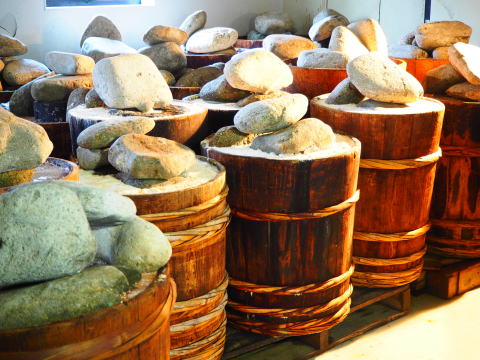
The safety mark of the scalding and sterilizing practice, “20 minutes at 85 degrees” is especially important. This allows the texture of the tsukemono to remain and at the same time it allows for the bad bacteria to be suppressed. At Yoshima Farm, 70% of the tsukemono that is delivered are sold at the morning markets, and the rest of 30% are sold through mail orders, and only very few will be sold wholesale to local retail shops and or to restaurants.
Even the color of simple asazuke that is easy to make at home can turn bad if it is left on the store front too long. For that reason, if it is cucumbers, they only make kasuzuke (pickled in sake-lees) and furuzuke styles. Many in the business will add preservatives depending on how the customers react. Nevertheless, the Yoshima Family carried through without using preservatives and learned about the various laws of nature. After that, the Miyagawa Morning Market Cooperation Association took the decisive measure to not repack or use imported ingredients and agricultural processed products for all their products. They came to the realization that their morning market was their main place to showcase their products, and came back to their original purpose of providing a place and opportunity for direct sales to happen just with local products. Truly a happy story.
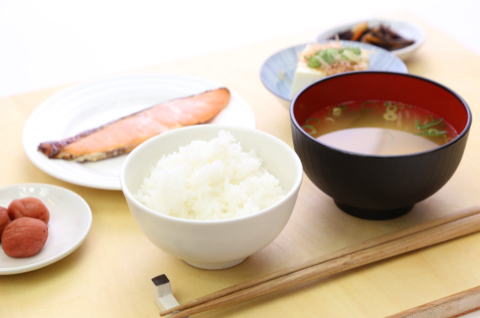
Future of the Tsukemono
60% of the tsukemono that Yoshima Farm makes are red turnips. It is a traditional vegetable that is very delicate, prone to chain disorder, and is selective to regions as well. Sowing is done in early September and is harvested in November. Harvesting time overlaps with their pickling time, so they do not grow too many on their own field and instead, have the neighboring farms grow them. Vegetables with an excess of fertilizers tend not to ferment with much vigor, are prone to easy bruising, and do not taste too well. Even if you request that farmers go easy on using chemical fertilizers as much as possible, some farmers just cannot get rid of their old habits so some relationships with some farmers were broken off. People lose their imagination once when they get accustomed to too much agricultural effectiveness and surplus of production control.
The minimum amount of pickling time is at least 3 months in the wood barrel, and some even pickle for a year. During this time when the pickling stone is set on top and is rested, it cannot be shaken or touched. Even with that much attention to it, sometimes a whole barrel must tearfully be discarded. Nowadays with extreme weather patterns occurring, there are many days when one must answer one’s own questions. Once when the pickling period is over without any incidents, the vegetables are washed with fresh water on the surface and shaped. When they are bagged, it gets sealed with a vacuum pack machine, and goes through a process where fermentation is stopped by getting heated in an oven with a temperature that is almost like being in a 85 F degree-lukewarm-sauna.
“Asazuke flavors cannot be treated the same way it has been in the past. Because the crispiness is the most important feature of asazuke, once you add heat to it, the vegetables become too soft. That is why many end up adding pH adjustment chemicals such as vitamin C, that will work as an anti-oxidation chemical. This does come close to creating a home-made-flavor on the surface. If it was Kyoto, where the neighbors come to buy tsukemono every day, then it may be possible to make a large batch of asazuke without preservatives.”
Whoever takes control of the lactobacillus will control the tsukemono. Once you review the principle of its way, you can begin to understand that when the pickled liquid is replaced with the cellular liquid that is included in the vegetables, the flavor of the pickled liquid will enter the cell, and the preservability as well as the flavor will increase. If the saline concentration is within 5%, the lactobacillus will ferment vicariously within a few days (asazuke: light pickling) but will create a flavor that will not last too long. If it’s over 12%, the lactobacillus activities will be restrained, and once when it goes over 15%, it will be protected by most of the decaying bacteria and it becomes possible to be preserved for a longer period (furuzuke: longer pickling). If you allow your attention to be taken away from the origins of these fermented food products, it becomes more difficult to keep and pass on the local food culture’s memory.
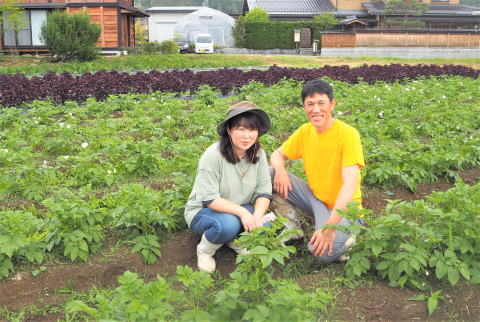
“Food cultivates human spirituality. So, a farmer who handles food by themself, must raise his or her spirituality.” Work that lacks spirituality will not last. Because of the weakening economy, a lifestyle where you can enjoy the little things that fit your capacity has become favorable. Thus, they were able to wake up and discover the compact and old-style of tsukemono making that brought the local climate and weather pattern to their advantage.
“In other words, ‘Small Is Beautiful’”, Yasunori said with a smile. I never expected to hear the words of Schumacher
the economist, 38 years after his command of the world, at a farm deep
in the mountainous countryside. It will certainly be interesting to follow
through and see where the weight of this tsukemono image will land. [Winter,
2011]
Written by Fukashi Setoyama
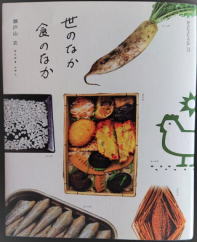
Written by Fukashi Setoyama “
Within the World, Within the Food” (2013)
(Original Title in Japanese: “Yononaka, Shokunonaka”)
Excerpt Pgs. 004~052
